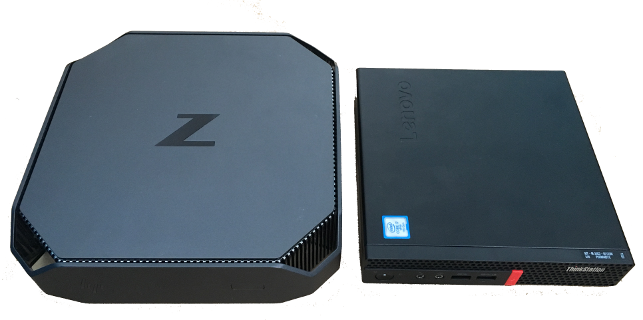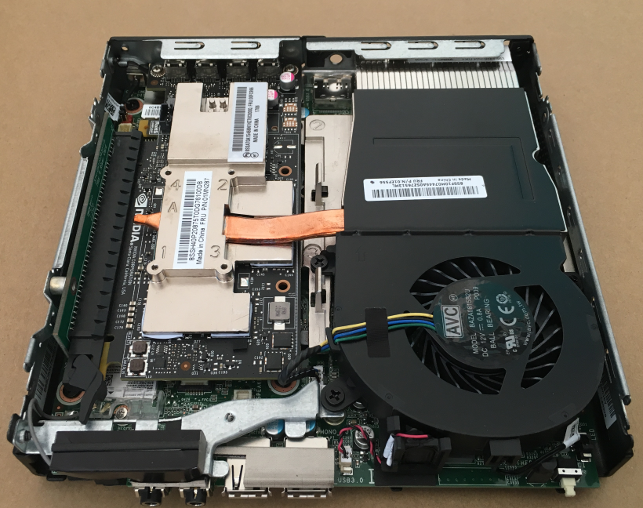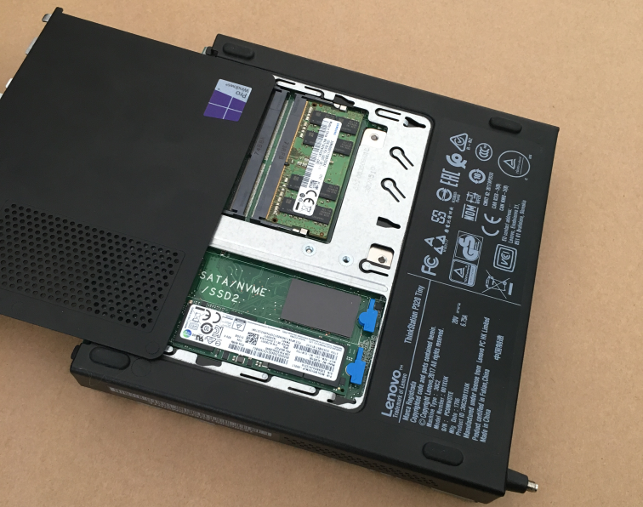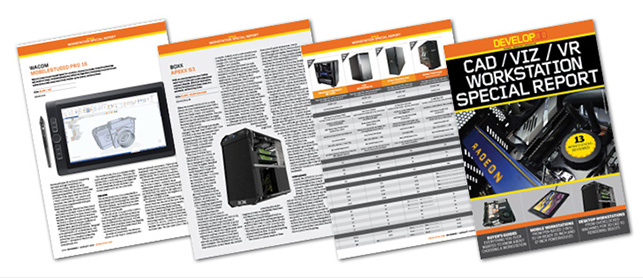Lenovo’s ThinkStation P320 Tiny is the smallest yet. But despite its diminutive form, it still delivers the goods for mainstream 3D CAD and BIM workflows
In 2016, HP redefined the Small Form Factor (SFF) workstation with the introduction of the HP Z2 Mini. With a 216mm x 216mm x 58mm chassis, this machine was dramatically smaller than anything that had come before, but still managed to pack a punch for 3D CAD.
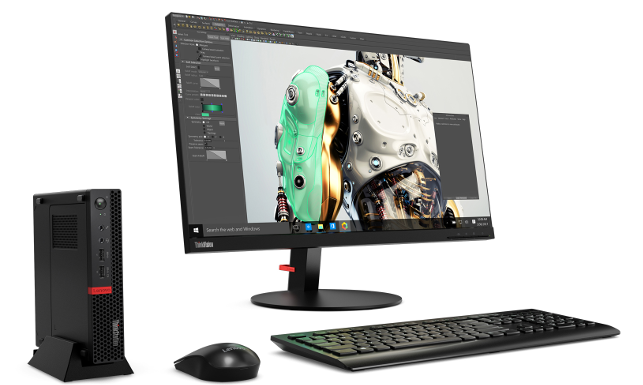
ThinkStation P320 Tiny with 27-inch display for scale
Now, Lenovo has gone one step further with the ThinkStation P320 Tiny, a new 3D CAD-focused workstation that is even smaller than the HP Z2 Mini. Incredibly, it takes up half the volume and is only 180mm x 183mm x 36mm in size, weighing a mere 1.3kg.
And what’s more, despite this significant shrinkage, it still stands shoulder-to-shoulder with the HP Z2 Mini when it comes to performance. In some graphicscentric workflows, it’s actually faster.
Unlike the HP Z2 Mini, which was built from the ground up to be a workstation, the ThinkStation P320 Tiny has been adapted from Lenovo’s business PC, the ThinkCentre Tiny.
As the chassis is so small, the ThinkStation P320 Tiny keeps thermals in check by offering a choice of low-power Intel ‘Kaby Lake’ CPUs.
Our test machine came with the topend model, the Intel Core i7-7700T (4 cores, 8 Threads / 2.90 GHz to 3.80 GHz Turbo), but there are other options, including the Core i5-7500T (4 cores, 4 threads, 2.70 GHz to 3.30 GHz Turbo).
However, the entry-level Core i5 should only really be considered if budgets are exceedingly tight or you’re not interested in ray trace rendering (it does not support HyperThreading).
The Intel Core i7-7700T draws 35W at peak, instead of 70W, which is typical of most high-GHz quad core desktop CPUs.
With significantly less power to play with, the stock and Turbo frequencies are lower, but this doesn’t impact performance as much as one might expect (more on this later).
ThinkStation P320 Tiny – product specifications
■ Intel Core i7 7700T CPU (2.9GHz, 3.8GHz Turbo) (4 Cores) CPU
■ 16GB (1 x 16GB) DDR4-2400 memory
■ 1 x 512GB M.2 NVMe SSD
■ Nvidia Quadro P600 GPU (2GB)
■ Microsoft Windows 10 Pro 64-Bit
■ 180mm x 183mm x 36mm (w) x (d) x (h)
■ 3 Year On-site warranty
CPU benchmarks (single threaded) – Seconds (smaller is better)
SolidWorks 2015 IGES export: 113
CPU benchmarks (multi-threaded) – Seconds (smaller is better)
Luxion KeyShot 6.1 render test: 811
V-Ray CPU rendering benchmark (CPU): N/A
GPU compute benchmark – Seconds (smaller is better)
V-Ray render benchmark (GPU): N/A
3D graphics benchmarks (3D CAD) – Score (bigger is better)
SPECapc for SolidWorks 2015 (shaded + edges): 4.09
SPECapc for SolidWorks 2015 (RealView + shadows): 6.25
SPECapc for SolidWorks (RealView + shadows + AO): 10.31
SPECapc for PTC Creo 3.0 (shaded + edges): 4.22
SPECapc for PTC Creo 3.0 (reflection): 5.43
3D graphics benchmarks (design viz) – Frames Per Second (FPS) (bigger is better)
LumenRT (hotel model) (FPS): 16
LumenRT (roundabout model): 7
Autodesk LIVE (Villa Enhanced model): 35
Autodesk VRED Professional (AA off): N/A
Autodesk VRED Professional (AA medium): N/A
Autodesk VRED Professional (AA ultra high ): N/A
3D graphics benchmarks (VR) – Frames Per Second (FPS) (bigger is better)
VR Mark (Orange): N/A (not VR ready)
VR Mark (Blue): N/A (not VR ready)
VR Mark (Cyan): N/A (not VR ready)



